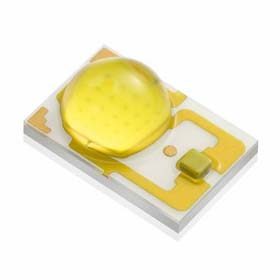While most LED suppliers offer a variety of red, blue and green LEDs, there’s now also the option for two unique colours – Lime and Mint – and each provides additional color-mixing options. Lime and Mint LEDs enable colour-mixing luminaires to produce higher lumen output and lumen per watt performance than can be achieved with primary color LEDs.
More importantly, the ability to produce high-quality and efficient white light in a colour mixing application without sacrificing saturation. With the right LEDs, we can add immense value, improve performance, and develop signature lighting schemes that were never before possible.
The creation of Lime and Mint LEDs came in response to the challenges faced with implementing conventional RGB color mixing while maintaining high power efficiency. The problem is that of the three primary colours, red, green, and blue, the green LED is the least optically efficient – an inherent characteristic of the semiconductor material that emits green light.
At the same time, the human eye is most sensitive to the green portion of the visible light spectrum. Ironically, the LED with the lowest efficiency, the green LED, makes the biggest contribution to the perceived brightness of a colour-mixing luminaire. Therefore, in an RGB system with a limited power budget, the luminaire’s ‘punch’ – the perception of how bright it is – will be compromised by the low output per watt of the green LED.
A separate but equally important effect of the direct green LEDs in RGB systems is a relatively low colour rendering index (CRI) score. The low CRI score is due to the narrow spectral distribution of the green LED and its relative distance from the blackbody curve, resulting in poor rendering of unsaturated green hues.
So, in colour-mixing applications, the use of Lime or Mint improves efficacy. They also enable color-mixing fixtures to achieve a higher CRI score, even 90+ CRI, because Lime and Mint have much broader spectral coverage than a direct Green LED. In fact, an Amber or Red LED in combination with a Lime LED can be used to create a high-quality, efficient white luminaire. The Lime LED’s broad spectral power distribution inherently includes a residue of blue to enable the above.
Some suggest that an RGBW (Red, Green, Blue, White) solution could achieve the same result. In fact, an RGBL or RGBM solution is better balanced than RGBW and the primary reason is the already mentioned weakness of green relative to blue. In an RGBW system there is always too much blue. This is resolved by using either Mint or Lime instead of White. You still get the broad spectral distribution of the white LED and you get the benefit of higher light output for the same number of LEDs.
We’re becoming to see Lime and Mint LEDs as the ‘secret sauce’ of colour mixing that enables them to add value by achieving a higher level of performance, colour rendering and confidence.

